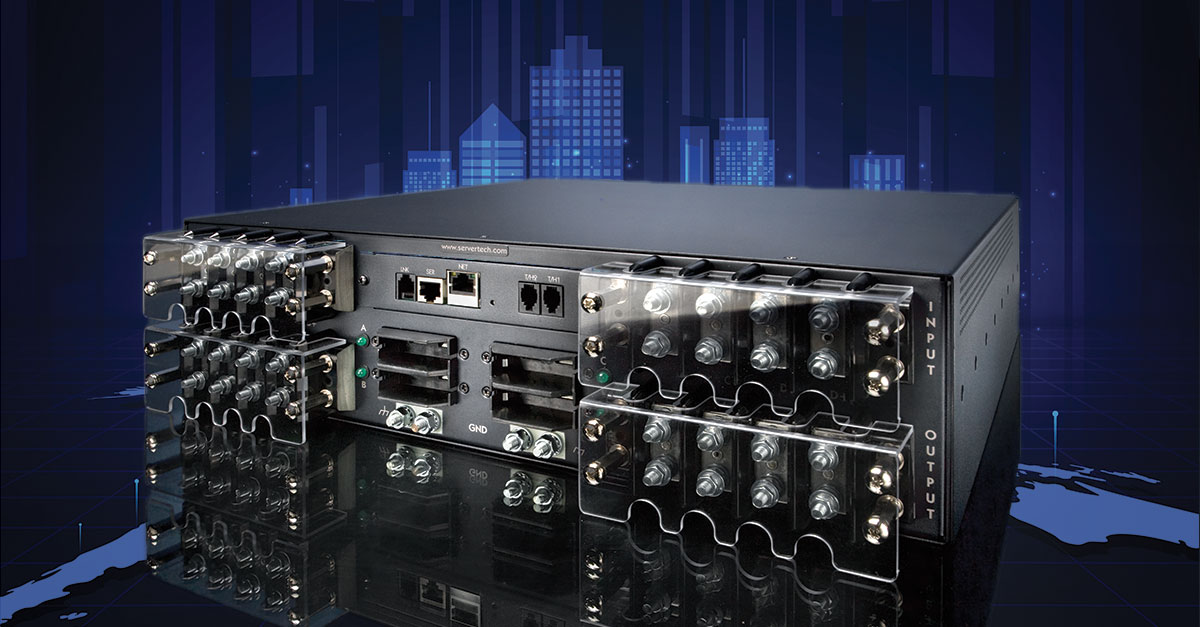Everything Needs Power: The Connectivity of Technology and Intelligent PDUs
Annie Paquette
October 17, 2019
- Categories:
- Server Technology
- Tags:

As noted in the first blog in this series, there are a number of technological movements that are converging on the promise to improve the quality of modern life. From the Internet of Things and Smart Cities to 5G networks, edge computing, and artificial intelligence, data centers are being tasked with ever more computing, all of which require an IT component that eventually gets plugged into an outlet. In this new data ecosystem, everything needs power. But before we get to how much, this blog will explore the relationships between each of these technological movements, how they interconnect, and how they overlap.
In the smart city, sensors are everywhere. They monitor air quality and the utility meters that feed the cities’ buildings and transportation infrastructure. For years, sensors have helped regulate and control traffic, monitor temperature, and enable fire and security systems. New technologies have added to the wide variety of data available to cities, including sensors that monitor building health, provide facial recognition, detect signs of seismic activity, and let you know when your recycling bin is full.
In turn, both wired and wireless networks that are deployed to connect the sensors with their control systems have been rethought. These networks gather, store, and process data, and then transmit the distilled information in a timely fashion to the point(s) where the information can be acted upon or consumed. Without a 5G network, the promise of the smart city is only that.
As 5G networks are built out over the next few years, which will continue to be supported by traditional -48DC infrastructure, they will enable smart cities to move from promise to reality, which will, in turn, contribute to the further development of the Internet of Things. While smart cities can be considered a practical IoT implementation, the associated technological development will undoubtedly carry over into everyday life, transforming the way we work and play. The only limit to how big a thing the Internet of Things can grow is our imagination.
Well, that and the industry’s ability to support edge computing. As our cities begin to look and act a lot like a data center, utility uptime and network resiliency will become everyday concepts. Already, many city-managed systems are deemed ‘too critical to fail.’ These are connected to uninterruptible power supplies and data center PDUs that allow remote power management and the ability to automatically reset failing sensors and devices.
More sensors mean more data, which eventually translates into more or larger edge facilities to support data processing, as well as the new 5G networks that will drive traffic to the edge. While edge computing infrastructure handles time-sensitive applications and data aggregation, private and public cloud infrastructure provides general-purpose utility computing, big data analysis, and long-term information storage.
Increasingly, the big data analysis is being handed over to machines that have been programmed to sift, sort, analyze, and learn from the information being presented. Real-time traffic management is a reality thanks to this kind of AI. It is possible only because of data collected in a smart city, via the Internet of Things, transported to the edge via a 5G network, and taken to the cloud.
Servertech makes the -48VDC PDU that links smart cities to the future they promise. One thing is sure: every step of the way, everything needs power. In our next blog in this series, we will talk about just that: how intelligent data-gathering and analysis is only made possible with intelligent PDUs.
Thanks for your submission. One of our Power Strategy Experts will get back to you shortly.